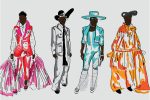There is no hiding the social disparities between the genders in the United States.
The social construct of genders and their “roles,” divided into feminine and masculine, have always been prevalent, and are now even more so under America’s current misogynistic president. Since the beginning of 2017, protests and events pertaining to women’s equality have been garnering the attention of the public, such as the “Day Without Woman Strike” on International Women’s Day on March 8.
There’s no doubt that passionate college students have proudly attended these marches in the name of female pride, which is what is heavily focused on right now, but what about the male gender and the social construction of their roles?
Hypermasculinity is a negatively exaggerated portrayal of the societal definition of what is considered to be masculine. In Andrew Smiler’s article, examples of stereotypical hypermasculinity include excessive drinking, fighting, misogyny and sexism. The University of Regina, situated in Canada, has taken notice of these commonly accepted stereotypical ideals imposed on males and has integrated the “Man Up Against Violence” initiative into their yearly curriculum. The initiative is a week-long event, hosted twice a year, that offers workshops to combat hypermasculinity.
The “Masculinity Confession Booth,” where the university’s male and female students can “share their sins [of promoting or acting on hypermasculinity] and talk about how we can fix them,” as the event description states, may just be permanently integrated as a workshop on Tuesdays and Thursdays.
In fact, universities have been more aware of hypermasculinity, under the label of “toxic masculinity,” and have created websites dedicated to the cause, incorporated talks of toxic masculinity into orientations and are implementing weeks similar to that of the University of Regina’s into semesters.
This is not to undermine the fact that men are, indeed, placed higher on the social gender hierarchy, however; it is to raise awareness of the importance of breaking gender roles and stereotypes. All educational institutions should focus on dismantling preconceived gender profiles.
The construction of the hypermasculine role begins at a young age, and as Michael S. Kimmel says in his article, “Masculinity as Homophobia.”
“Manhood does not bubble up into consciousness from our biological makeup; it is created in culture. Manhood means different things at different times to different people,” he writes.
So how does the masculine gender role become embedded into the minds of men? Boys are constantly scrutinized by their surrounding social sphere and are prone to emulate male behavior from older figures. “Hypermasculinity and Violence as a Social System,” written by Thomas J. Scheff, describes the human need for connection with other people. However, with males who are taught that only “masculine” individuals have character and that to cry is to break this character, connection becomes competition.
Masculinity is thought to translate as power, and among the male community, the need to demonstrate that “power” develops as boys grow into men. The only way to stop this vicious cycle that recreates the “normative male role” is to bring awareness to the youth.
Words like “masculine” and “feminine” are just semantics. Communication is key here, and if something isn’t said about the societally construed masculine and feminine gender roles, many students will be going off into the “adult world” without a clue that words don’t define who you are.
Counseling is always helpful and is something many campuses provide, but that isn’t enough. Pamphlets concerning the problem of hypermasculinity should be distributed among students or left in a pile inside the counseling center. The point is to have the information exposed so that it is easily accessible, not only to those who are seeking help with the pressures of fitting into the “masculine mold,” but to those who are curious about it, and those who might not even know about the issue.
There are plenty of other resources college administrators can rely on to implement more workshops to combat hypermasculinity. Take “Men Can Stop Rape” for example. Men Can Stop Rape is a non-profit organization working to “creat[e] cultures free from violence” by teaching male high school and college students how to use their power in stopping violence through dismantling the preconceived masculine role. On their website, you can schedule to have a training workshop, lecture or interactive conference on “unhealthy masculinity” at your school.
Or, perhaps, normalizing the entire gender-semantic spectrum in your college (as mine has) can help men truly connect with who they are. The “What I Be Project,” which unites people from all over the globe, aims to help people feel secure about themselves by allowing them to share their insecurities.
This young man’s story reminds the reader that there are so many other labels, such as gender-non conforming and non-binary, but it is important to have an open mind and to integrate all of them into your school. Hold conferences about the meanings or create a gender and sexuality club. Either way, men who do not conform to the “normative role” will feel encouraged to discuss their problems and become more enlightened about exactly who they are.


















[…] piece addresses the issue of masculinity and his Dominican background in how they kept him quiet about being raped as a child. He […]
This article provides an excellent and thorough analysis of why continuing education is essential for the growth and success of healthcare professionals and the industry!
@Geometry Dash Full Version adventure games
Browser-based tools save time and system resources.
@SixGamez Web Tools are designed to work seamlessly across all devices.